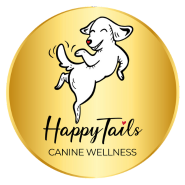Have you always wondered if fiber could help your dog’s digestive system? If so, what types of fiber would be best?
Your Dog’s Digestive System
When your dog eats, the food travels through the esophagus and into the stomach. The stomach serves as a reservoir for a powerful acid produced by the body to break down the food into smaller particles. Eventually, the stomach’s contents move into the small intestine where digestive enzymes and bile acids are added to further break down the food and aid its absorption into the body. However, undigested food residues that don’t get absorbed must be eliminated from the body.
The Role and Benefits of Dietary Fiber for Your Furry Friend
Dietary fiber, from the proper sources, and at the right levels, provide several key benefits for your dog including the following:
- They aid in the removal of undigested food residues by producing a well-formed stool. Not only does this make stool clean-up easier, it can also aid ease of bowel elimination by the pet.
- They nourish your dog’s intestinal lining and limit the growth of bad bacteria or pathogens. Moderately fermentable fiber sources such as beet pulp, tomato pomace, and psyllium are partially broken down (fermented) by intestinal bacteria to produce short-chain fatty acids. These small fatty acids are not normally available in large quantities from other dietary ingredients making fermentable fiber sources uniquely important in maintaining your pup’s digestive health.
- Dietary fibers can also help slow the digestion of food to reduce the sugar (glucose) spike following a meal. This is metabolically advantageous for your dog. In cats, certain non-fermentable fibers (eg, cellulose, miscanthus grass) help bind hair to aid it being defecated rather than vomited out of the animal. Other research suggests that dietary fibers, likely through their fermentation to short-chain fatty acids, modulate the immune response and promote gut-derived hormones helpful in promoting satiety and insulin secretion. Insulin secretion is useful in storing the increased sugar in the blood in response to digesting a meal.
Is There a Downside when Feeding Dietary Fiber?
Highly fermentable fibers, such as guar gum or pectins (such as those found in fruit), when included in high amounts will be fermented extensively. This can become too much of a good thing and can be disruptive to the gut causing osmotic diarrhea (pulling water into the gut), an undesirable condition for both the owner and the pet.
Another inappropriate dietary attribute that has been perpetuated by some is the over-inclusion of fiber to dilute the diet’s calories to induce weight loss. Without other changes to the product, such diets will just result in the pet eating more of the food and increasing its stool output. Again, an inconvenience for the pet owner and simply not in the best interest of your pup.
What’s the bottom line?
Look for products that contain an added, and proper, source of dietary fiber. Unfortunately, many new product formats (e.g., lightly processed, raw) products do not contain added fiber. Then verify that the source of dietary fiber is a moderately fermentable source. Finally, refrain from using a high fiber diet for weight loss. Your dog will thank you.
Sample block quote
Praesent vestibulum congue tellus at fringilla. Curabitur vitae semper sem, eu convallis est. Cras felis nunc commodo eu convallis vitae interdum non nisl. Maecenas ac est sit amet augue pharetra convallis nec danos dui.
Sample lookbook gallery
Sample paragraph text
Cras suscipit quam et turpis eleifend vitae malesuada magna congue. Damus id ullamcorper neque. Sed vitae mid a cosmo pretium aliquet an sedo delitos. Pellentesque nulla eros accumsan quis justo at tincidunt lobortis denimes loremous. Suspendisse vestibulum lectus in lectus volutpat, ut dapibus purus pulvinar. Vestibulum sit amet auctor ipsum. Proin molestie egestas orci ac suscipit risus posuere loremous.




